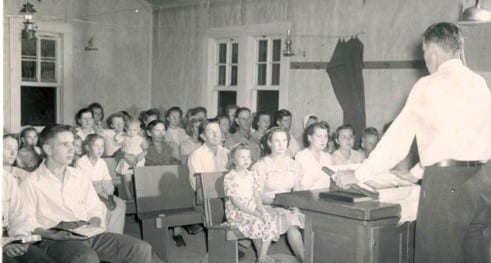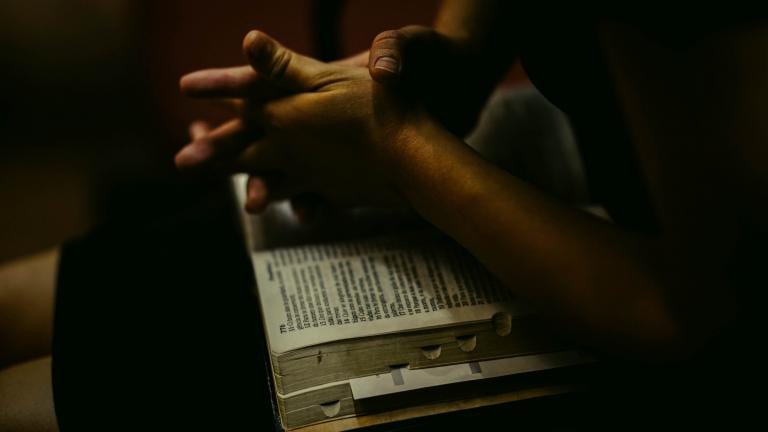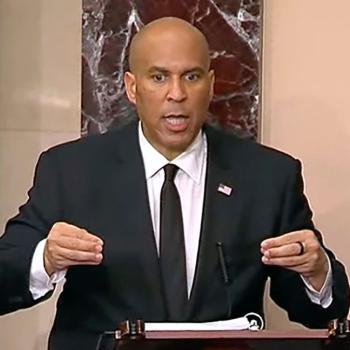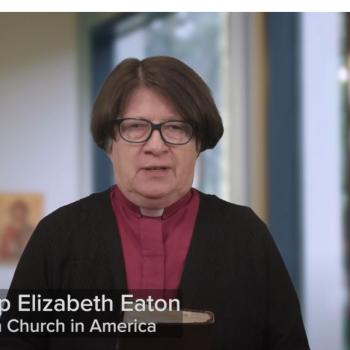I am a white teacher of preaching who has been doing this work for almost four years. It’s time to interrogate and deconstruct my perpetuation of whiteness in the pulpit.

I’m a white, female, cisgender, temporarily-abled, heterosexual Christian who is an ordained minister and a seminary professor. When I was a seminary student over twenty years ago, I learned to preach from a white, female homiletician. Our textbook on preaching was written by a prominent white male in the field of homiletics.
Only at the end of the course did we hear a recording of a sermon by a black preacher.
I grew up in a white Lutheran church, so this was the first time I had heard a preacher of color. I do not remember his name, but hearing his sermon, “Who Will Roll the Stone Away,” changed everything for me. It made me realize that I had not truly heard the gospel until that moment. He preached Christ to me in a way I had never experienced before, and it set me on fire. I knew then that I would need to re-learn how I had been taught to preach. A few years after I began pastoring, I also knew that I wanted to teach preaching to others.
Today, I am the white, female homiletician teaching my students how to preach.
I have studied the works of various scholars of color, incorporated some of their scholarship into my writing, and worked to confront my own racism. As a professor of preaching and worship, I had been feeling fairly self-satisfied with my introduction to preaching course. I have the students listen to and read sermons by preachers of color – both male and female. Though our student body is primarily white, I’ve had students of various ethnicities and races who’ve come from several different countries. In my classes, we all talk about all the “isms” that preachers can and should address in their preaching, including racism.
So I have been patting myself on the back, believing I’ve checked all the boxes that white liberal seminary professors need to mark off.
My first clue that I was off the mark came from my dean and president who pointed out that the primary texts I used for preaching are by white authors. They urged me to consider readings of homileticians of color as primary texts, not just as supplemental materials. This conversation is part of our seminary’s ongoing conversation about what theological education needs to look like moving forward in a world still dominated by whiteness.
Then I attended the most recent meeting of my guild, The Academy of Homiletics, whose theme this year was “Unmasking Homiletical Whiteness.”
And I was further confronted with my hypocrisy as a white liberal Protestant clergyperson and seminary professor.
We spent three full days in difficult conversations about the ways in which the privileging of whiteness has driven the development of homiletical theories, theologies, pedagogies, and practices. From the shaping of homiletics at our guild’s founding in 1965 (by white men) to the ongoing privileging of white male homiletic theory, we need to uncover the harm that racialized whiteness does to the academy and our teaching colleagues. And the way it distorts our teaching of seminary students, which, in turn, perpetuates whiteness in the churches our students will pastor.
I heard many papers and participated in several dialogues about ways we can unmask homiletical whiteness. This includes being aware of the fact that Christianity did not originate with white people and did not become a euro-centric religion for the religion’s first thousand years. But as Europe’s brutal colonialization of Africa, Asia, and the Americas strode across the globe, missionaries were its (sometimes unwitting) accomplices. Christianity, the slave trade, commercial exploitation, and militarization all marched in lock-step together to subdue and do violence to brown and black bodies, control their land, eviscerate their culture, demonize their spiritual practices, and elevate whiteness as the highest ideal.
As a beneficiary of this tradition, and now as an ordained clergy within it, as well as an educator charged with both preserving and perpetuating Christianity, I have certain responsibilities.
Foremost is to make every effort to uncover the hidden assumptions and embedded practices that continue to racialize my religion, my preaching, and my teaching. The reason I must do this is because anything less is at odds with the teachings of the one who I claim to worship – Jesus of Nazareth, a man brown of skin whose body was crucified and resurrected.
As James Cone taught us, “God is black,” meaning that God – through Jesus – enters the state of oppression, derision, objectification, and violence that people of color have experienced at the hand of the white domination system. If I, as a white Christian seminary professor, am not willing to, at the very least, have my comfort and privilege afflicted for the sake of the gospel, then I am nothing more than a hypocrite and should find a different profession.
If we truly worship the God who, according to the eschatological vision of Revelation 7:9-14, brings in all nations – without privileging any one culture, ethnicity, race, or phenotype – then we must make every effort to have the church and our seminaries do the same. Otherwise, we are making an idol of whiteness, because we are unwilling to put God above our racial comfort.
What will unmasking homiletical whiteness look like?
At the very least, we need to look at the books we use to teach preaching. The primary homiletical texts we have used for the past century are by white males. Typically, we list homileticians of color in the “recommended readings” of the course bibliography. Or we bring in a black preacher for a “special lecture” like an exhibit in a museum. Or we create the token course in black preaching. To counter this, the de-centering of white voices and bodies is necessary in our curricula.

Further, as one of our Asian-descent colleagues reminded us, the perpetuation of the black-white polarity ignores or diminishes all other historically under-represented cultures, races, and ethnicities. Where is the preaching textbook in our syllabus by a Korean, a Latinx, a Caribbean?
And as another of our colleagues who works with Native American tribes pointed out, our refusal to engage in deep listening to the pain of conquered and colonized Indigenous nations only perpetuates this shameful history.
Of course, there are many other questions I have to ask of myself, of my institution, of my colleagues, and of my students as we continue to unmask homiletical whiteness. Questions like:
- How can we liberate bodies in the classroom that are socialized into a white paradigm of teaching (rows of chairs, sitting still, passively receiving information)?
- How has whiteness formed the worship spaces of white Christian architecture, and how might we reimagine the liturgical geography of the church?
- What are ways of embodying preaching that move beyond the constraints of the racialized pulpit so that our proclamation of God’s love truly honors the fleshiness, the particularity, and the vulnerability of the incarnation of Christ?
- How do we begin the conversation about race in white churches that are either loathe to broach the subject, or simply dismiss it as irrelevant because “we don’t have any black people here”?
These are large questions that will take time to unpack, discuss, and address in ways that make a difference.
Also, I recognize that some of these issues are beyond my immediate control. But at the very least, I have to ask these questions. And I can start with the things over which I do have a say – my self-education, my scholarship, my pedagogy, and my relationships with my teaching institution and my students.
I’m as guilty of “white myopia” in my teaching of preaching as anyone.
This means I have to rethink things. Like, why am I not questioning or at least expanding the preaching standards set by whites (and usually) males? Why are there no homileticians of color (HOC) in my primary readings? Why am I not staying up-to-date and reading the books of HOC? By not reading and teaching the work of HOC – especially female HOC – I am sending a message to my students that white homileticians are normative, and everyone else is supplemental, extra, an add-on.
I don’t want to be that kind of teacher or scholar. I don’t want to be that kind of colleague in the guild. And I don’t want to be that kind of Christian.
I want to do better. I need to do better. I will do better.

Leah D. Schade is the Assistant Professor of Preaching and Worship at Lexington Theological Seminary in Kentucky. She is the author of Preaching in the Purple Zone: Ministry in the Red-Blue Divide (Rowman & Littlefield, 2019), Rooted and Rising: Voices of Courage in a Time of Climate Crisis (Rowman & Littlefield, 2019), and Creation-Crisis Preaching: Ecology, Theology, and the Pulpit (Chalice Press, 2015).
Twitter: @LeahSchade
Facebook: https://www.facebook.com/LeahDSchade/
Read also:
Hi, I’m Leah. I’m a Recovering Racist.
What Toni Morrison Taught Me About Racism in Her Book ‘Beloved’
Preaching Martin Luther King’s ‘Drum Major Instinct’ in the Trump Era

















